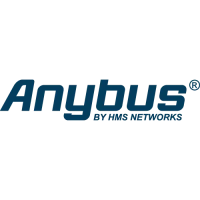Server Side Include (SSI) 42
Doc.Id. HMSI-27-212
Anybus CompactCom 40 EtherNet/IP
Doc.Rev. 1.5
6.3.9 printf()
This function returns a formatted string which may contain data from the Anybus module and/or ap-
plication. The formatting syntax used is similar to that of the standard C-function printf().
The function accepts a template string containing zero or more formatting tags, followed by a number
of arguments. Each formatting tag corresponds to a single argument, and determines how that argument
shall be converted to human readable form.
Syntax:
<?--#exec cmd_argument='printf("template" [, argument1, ..., argumentN])'-->
Default Output:
Example:
See also...
- “ABCCMessage()” on page 46
- “Example (Get_Attribute):” on page 48
Scenario Default Output
Success (printf() result)
ABCCMessage error ABCCMessage error string ( “Errors” on page 49)
template- Template which determines how the arguments shall be represented. May
contain any number of formatting tags which are substituted by subse-
quent arguments and formatted as requested. The number of format tags
must match the number of arguments; if not, the result is undefined.
Formatting tags are written as follows:
%[Flags][Width][.Precision][Modifier]type
See also...
• “Formatting Tags” on page 43
argument- Source arguments; optional parameters which specify the actual source of
the data that shall be inserted in the template string. The number of argu-
ments must match the number of formatting tags; if not, the result is un-
defined.
At the time of writing, the only allowed argument is ABCCMessage().
See also...
• “ABCCMessage()” on page 46

